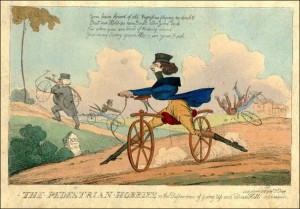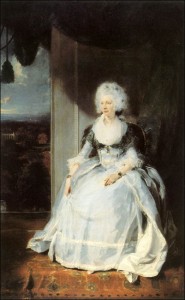Candice’s book The Bride Sale is set during 1818 and 1819.
All links are to Wikipedia entries.
Government, Politics, and War:
- January 6: The third Anglo-Maratha War ends in India as British troops crush all resistance. Having destroyed the Maratha confederacy, the British annex its territories. India’s Rajput states (Jaipur, Jodhpur, and Udaipur), Poona, and the Holkar family of Indore come under British control, ending the independent kingdom of the Maharashtra that was established in 1674. Rajasthan had surrendered in 1817. The British now control most of India.
- February 5: Sweden’s King Karl XIII dies and is succeeded by Karl XIV Johan.
- April 4: The U.S. Congress adopts the flag of the United States as having thirteen red and white stripes and one star for each state (twenty) with additional stars to be added whenever a new state is added to the Union.
- October 1: The Congress of Aix-la-Chapelle is a gathering of the four allied powers (Britain, Austria, Prussia and Russia) to decide the question of the withdrawal of the army of occupation from France and the nature of the relations of the four powers towards each other, and collectively towards France. Occupation troops begin to leave France before winter.
- October 20: Treaty between the U.S. and the United Kingdom establishes the boundary between the U.S. and British North America as the 49th parallel from the Lake of the Woods to the Rocky Mountains, also creating the Northwest Angle.
Society and Social History:
- Church Building Act makes available £1 million for the construction of new Anglican “Commissioners’ churches” to serve the expanding urban population.
- July: William, Duke of Clarence (who would later reign as William IV) marries Princess Adelaide of Saxe-Meiningen. After Princess Charlotte’s death, the 53-year old duke is third in line to the throne after his brothers, the Prince Regent and the Duke of York. Since neither of his brothers have legitimate children, William is sure to inherit the throne, and marries to insure the succession. He and Adelaide will have two children who die in infancy.
- July: Edward, Duke of Kent, 4th son of George III, enters the race to secure the succession and marries Princess Victoria of Saxe-Coburg-Saalfeld. (Like his elder brother William, he had never married but instead had kept long-term mistresses.)
- November 17: England’s Queen Charlotte dies at age 74.
Literature, Journalism, and Publishing:
- John Keats’ epic poem Endymion is published.
- Walter Scott publishes The Heart of Midlothian.
- Lord Byron completes the 4th and final canto of Childe Harold’s Pilgrimage.
- Susan Ferrier’s first (hilarious) novel, Marriage, is published.
- Thomas Love Peacock’s Nightmare Abbey is published.
- January: Posthumous publication of Jane Austen‘s Northanger Abbey and Persuasion for the first time reveals her (previously anonymous) authorship.(They were actually issued late in December 1817, though the title pages say 1818.)
- January 1: Mary Shelley’s Frankenstein is published anonymously.
- May 14: Author Matthew “Monk” Lewis dies at age 42.
Art, Architecture, and Design:
- John Nash begins work on the new Regent’s Park area, with its neighboring streets, terraces, and crescents of elegant town houses and villas.
- March 24: Garden designer and artist Humphry Repton dies at age 65.
- October: Sir Thomas Lawrence travels to Aix-la-Chapelle to paint the sovereigns and diplomats gathered for the Congress.
Music:
- Schubert composes Symphony No. 6.
- December 24: Silent Night is composed by Franz Xaver Gruber and Josef Mohr.
Theater and Dramatic Arts:
- The Royal Coburg Theatre that opens in Lambeth to stage popular melodramas and other productions. It will later be known as the Old Vic.

The Pedestrian Curricle, or Hobby Horse. (Click on image to read more aout it and to see a larger version.)
Science and Industry:
- January 2: Britain’s Institution of Civil Engineers is founded.
- April: The first known two-wheeled, rider-propelled vehicle goes on display at Paris. Developed by German inventor Karl Drais, it has a seat and handlebars but no pedals. Called a Draisienne, it becomes a popular novelty throughout Europe. The following summer, a Covent Garden coachman, Denis Johnson, patents his own version of the contraption that he calls a “pedestrian curricle.” But most people will call it a “hobby horse.” It will disappear into oblivion after a few years, but it ultimately led to the invention of the pedal-driven bicycle in 1863.
- September 25: In London, Dr. James Blundell carries out the first blood transfusion using human blood
Natural History and Exploration:
- Scottish explorer John Ross commands an Arctic expedition organized by the Admiralty, the first of a new series of attempts to solve the question of a Northwest Passage, ie going around the extreme northeast coast of America and sailing to the Bering Strait. His expedition fails to discover anything new, and is later discredited.





